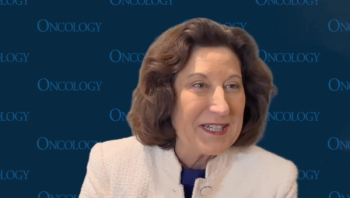
Study Raises Questions on Treatment of DCIS
A large study found that while the risk of dying from breast cancer after a DCIS diagnosis is quite low, it is on par with that of women diagnosed with small, invasive breast tumors, and that aggressive DCIS treatment does not produce better results.
A large observational study of more than 100,000 women has found that while the risk of dying from breast cancer after a ductal carcinoma in situ (DCIS) diagnosis is quite low, it is on par with the mortality rate of women diagnosed with small, invasive breast tumors. The study also found that aggressive DCIS treatment does not produce better results. These results are
Steven A. Narod, MD, of the Women’s College Hospital, in Toronto, Canada, and coauthors used the Surveillance, Epidemiology, and End Results (SEER) 18 registries database to identify women diagnosed with DCIS between 1988 and 2011. The risk of dying of breast cancer among these women was compared to that of the general population. The average age at DCIS diagnosis was 53.8, and the women were followed for an average of 7.5 years.
DCIS is often described as a “pre-invasive neoplastic lesion that is not lethal in itself,” according to the authors, but “the results of the present study suggest that … cases of DCIS have more in common with small invasive cancers than previously thought.”
The study also suggests that aggressive treatment-radiation therapy following a lumpectomy-does not result in a decrease in death from breast cancer in those initially diagnosed with DCIS. Adding radiotherapy was associated with a non-significant decrease in breast cancer–specific mortality at 10 years (0.8% compared with 0.9% for women who had just a lumpectomy; P = .10).
The overall breast cancer–specific mortality at 20 years after a DCIS diagnosis was 3.3%. The 10-year breast cancer–specific death rate was 1.1%. The risk of death from breast cancer for these women was 1.8 times greater than that of women in the general population.
The study also identified young age at diagnosis and black ethnicity as two major risk factors for death from breast cancer following a DCIS diagnosis. The risk of death from breast cancer was 17 times greater for women diagnosed with DCIS prior to age 35 compared with 1.4 times greater for those diagnosed after the age of 65. Women diagnosed before age 35 had a 7.8% 20-year breast cancer–specific mortality compared with 3.2% for older women (P < .001). Black women had a 7% 20-year breast cancer–specific mortality compared with 3% for non-Hispanic white women (P < .001).
One caveat to this study, the authors noted, was the reliance on SEER-reported pathology data. A more careful pathology report analysis may have found some DCIS cases to actually be invasive tumors.
“We should think about ways to better characterize the biology of the DCIS lesions, using available tools such as Oncotype DCIS,” wrote Laura Esserman, MD, and Christina Yau, PhD, both of the University of California, San Francisco, in an
Newsletter
Stay up to date on recent advances in the multidisciplinary approach to cancer.
















































































